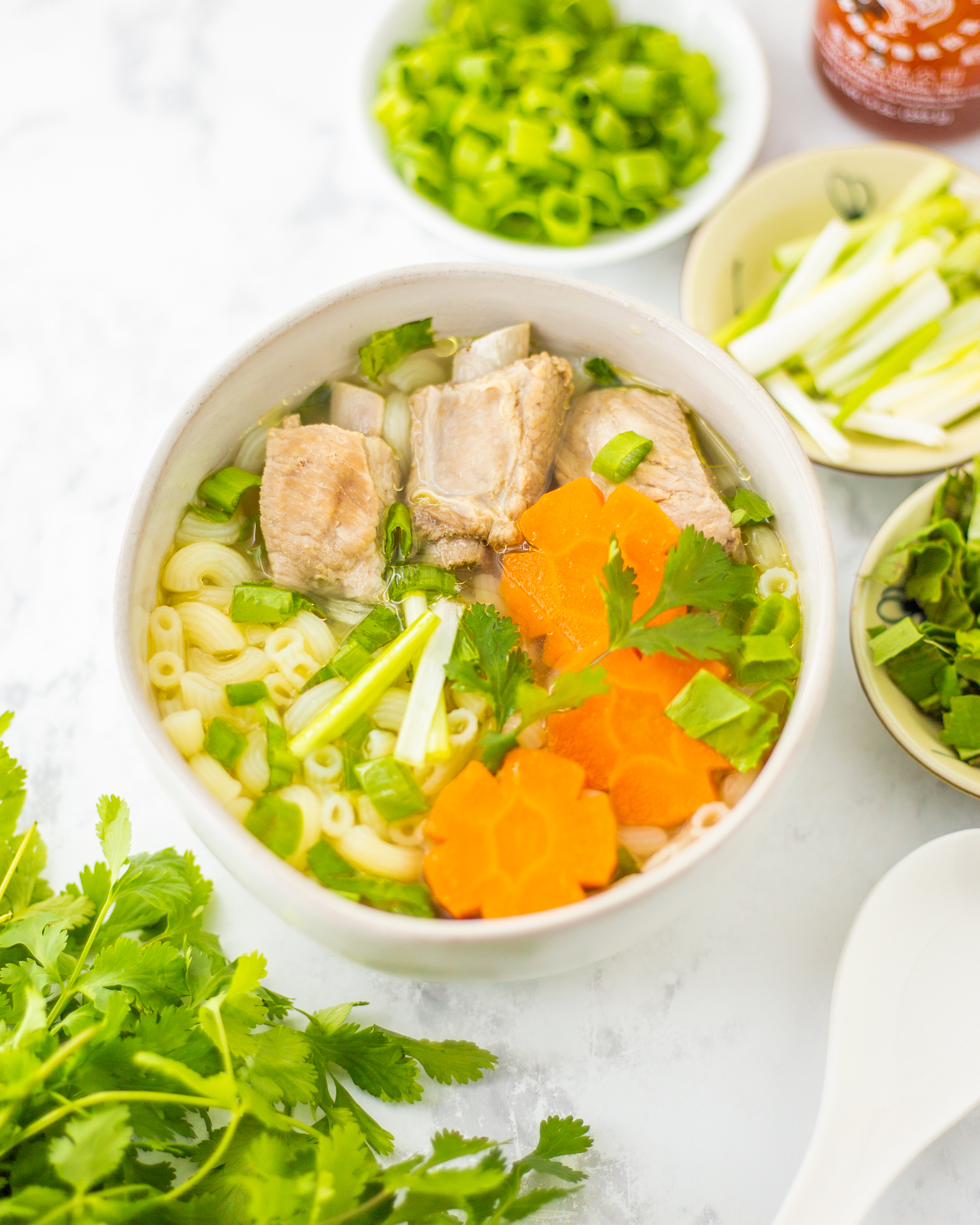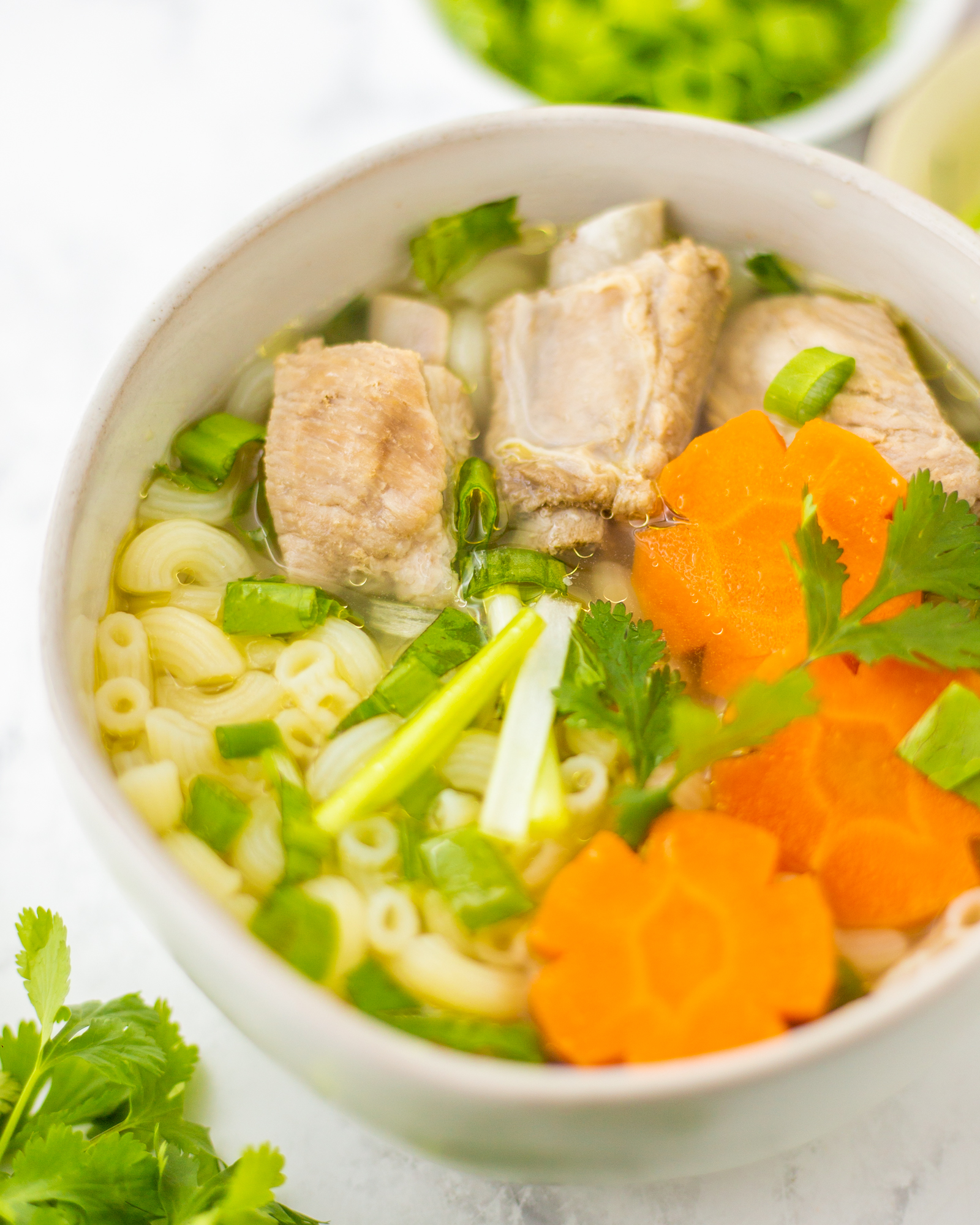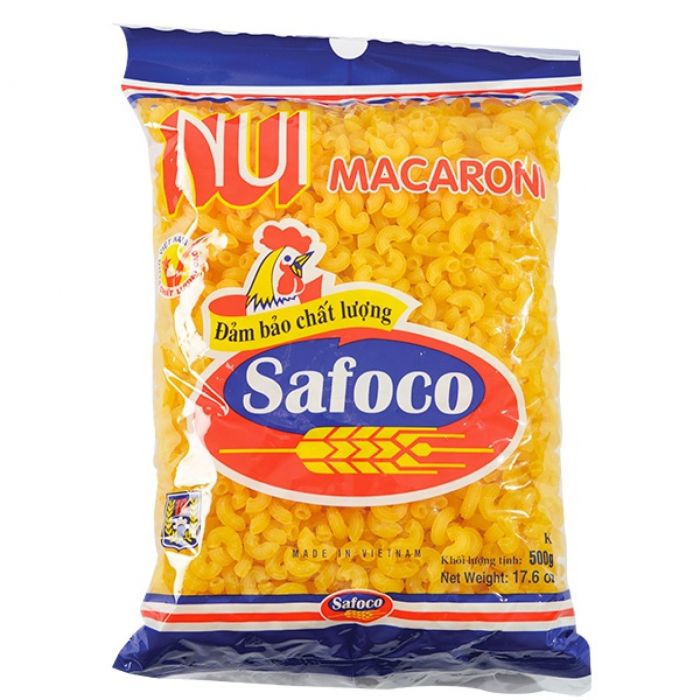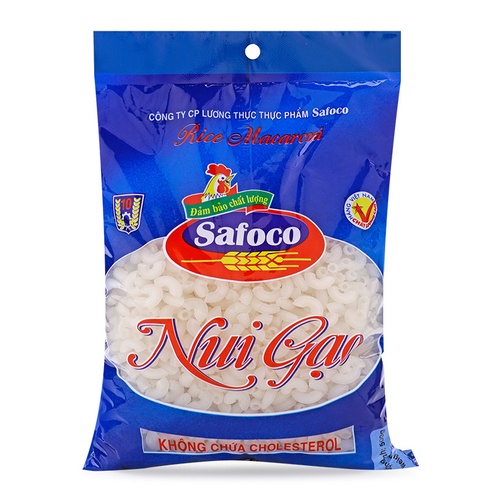
MM Bon Appétit

While the word “nui” in Vietnamese came from the French “nouille”- which means noodles, we actually use it to refer to small/non-string-like pasta shapes like macaroni, stars, rigatoni, fusilli, etc.
This is a dish that my mom made on, at least, a bi-weekly basis when I was little because it is simple, nutritious, and kid-friendly- especially since I was an extremely picky eater (surprising, I know). I actually got pretty sick of this soup because I had it so often, but now as an adult living abroad, I love and feel very nostalgic eating it. Isn’t it funny how things change as you get older and how strongly some foods are tied to your childhood?
Pork ribs might be the favorite/most common Vietnamese way to make a simple broth. Pork rib broth has a lovely natural sweetness, has a more neutral taste than beef broth yet usually more flavorful than chicken broth, and pairs well with most ingredients. There are countless soups made with pork rib/bone broth- like canh măng sườn, bún bung, bánh canh, etc.
This is also a great make-before recipe for a busy week. You can make a large batch of the soup and pasta (or cook the pasta whenever you need to serve it) and store the whole pot in the fridge or divide into individual servings!

INGREDIENTS FOR SÚP NUI SƯỜN
- Pork spare riblets - Sườn heo: riblets are created when center cut ribs are cut in half lengthwise so you end up with smaller pieces. You can use full ribs but riblets are ideal because they are easier to eat and fit better in your bowls of soup when serving. In Vietnam, ribs are almost always sold as pre-cut riblets rather than full racks.
- Pasta - Nui: I like using macaroni or the tiny star-shaped pastina, but you can use any small shape. If it is available to you, I recommend buying nui made by Vietnamese brand like Safoco. They usually make 2 types: yellow “nui” and white “nui gạo”.The former is made with rice flour, wheat flour, and eggs. They are thinner but more bouncy and less likely to fall apart than regular pasta- which makes them ideal for soup.The latter is made with only rice flour (gạo = rice). If you are not vegan/gluten-free, I recommend the yellow nui. (See below ingredient section for photos)
- Carrots - Cà rốt: they add sweetness to the broth and extra nutrients. You can also do half carrot & half daikon radish, although my personal preference is just carrots.
- Shallots - Hành tím/hành khô: adds depth to the broth.
- Fish sauce - Nước mắm: arguably the most important seasoning sauce in Vietnamese cuisine. Made from fermented anchovies, it is salty and incredibly umami. Non-vegan Vietnamese recipes without fish sauce are very rare. The best nước mắm comes from Phú Quốc or surrounding islands off the coast- Southwest of mainland Vietnam. Our favorite brand available outside of Vietnam is Red Boat (U.S.).
- Bouillon - Hạt nêm: think broth, but in solid form. Bouillon is an amazingly easy way to bring that umami flavor to your food. We use it instead of salt in many of our dishes. You can usually find chicken, pork, or mushroom bouillon. In Vietnam, Knorr is the most common brand. However, we have only been able to find Knorr in powder form in the US and France, not granules. Instead, we use Totole brand chicken or mushroom bouillon. The quantities on our website are based on the granule-type so if you use powder, adjust to your taste.
- Green onion - Hành lá
- Vietnamese herbs - Rau thơm: your choice for garnish, like cilantro (ngò rí), culantro (ngò gai), Vietnamese/Thai basil (húng quế).


DIRECTIONS FOR SÚP NUI SƯỜN
- If your ribs/riblets come in a rack and are not pre-cut, cut between the bones to get individual pieces.
- Add ribs to a large pot and add just enough water to cover. Bring water to boil on medium heat, then parboil the ribs for 2-3 minutes. This helps extracts the impurities.
- Strain and rinse the ribs well.
- Peel shallots
- Return ribs to a clean pot and add water, shallots, and bouillon.
- Bring to boil on medium heat, skimming any impurities and foam that appear on the surface.
- Once boiling, reduce heat to medium, cover, and simmer for at least 30 minutes, but preferably 50.
- Meanwhile, peel and slice carrots into 1/2cm-thick pieces.Optional: To make flower slices, cut the carrot in half. Then score one end of the carrot piece into 5 equal sections (like cutting a pie). Use those lines as guides to cut 5 shallow lines along the length of the carrot. Cut each line into a v-shape trench by cutting towards the line at 45° angle on either side. Once all the trenches are done, slice the carrot crosswise into flower slices.
- Cook the pasta according to package instructions in a pot of salted water. Drain and rinse with cold water to stop pasta from cooking further. Set aside.
- Chop green parts of green onions.
- Cut white parts of green onions into 3-4cm lengths and slice in quarters lengthwise.
- Prepare any other herbs you are using for serving.
- After broth has finished simmering, add the carrots, increase heat to medium, and cook until carrots are tender, but not mushy - about 7-10 minutes.
- Season broth to taste with bouillon and fish sauce.
- Add pasta to bowls.TIP: to prevent pasta from cooling down your broth too quickly, add pasta to a strainer (see: noodle basket) and dip into the broth to warm up pasta before adding to your bowls.
- Divide ribs and carrots between bowls. Ladle broth into bowls.
- Top with green and white parts of green onions. Garnish with other herbs and serve!
RECIPE VIDEO
Link nội dung: https://blog24hvn.com/sup-a57125.html